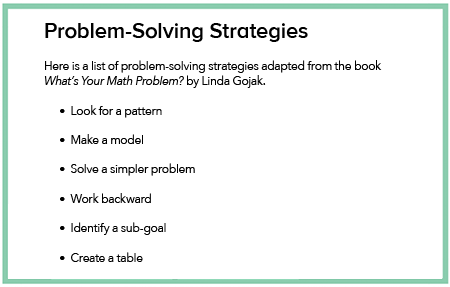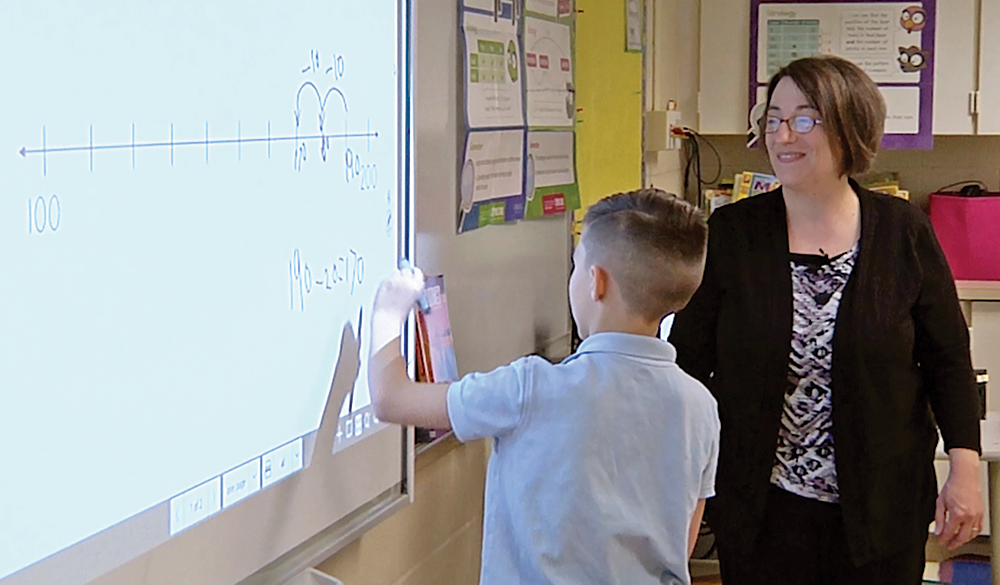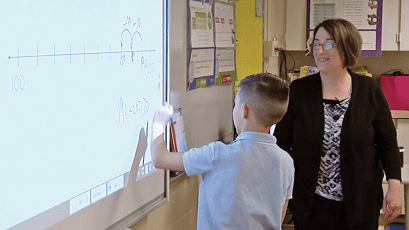Great Ideas
Exploring the Teacher’s Role in Problem-Solving
Developing Problem-Solving Strategies
This article is the second in a four-part series on problem-solving.
Problem-solving is what we do when we look at a task and don’t know what to do. This makes strategies very important – they are how we begin. When a child looks at a problem and says, “I don’t know,” our role as a teacher is to help them persevere – to stick with it and find a solution.
Strategies are the tools we use to get started when there is no obvious solution path. Look at these two problems below. Which one has the more straightforward solution path? Which is easier to start solving?

For many learners, the problem on the left, while not always easy to solve, is easier to start. There are some numbers given, along with clues about the fact that this involves addition and/or subtraction. The problem on the right has no numbers at all!
Here is a list of problem-solving strategies adapted from the book What’s Your Math Problem? by Linda Gojak. Which of these could you use to start working on the heartbeat problem?
- Look for a pattern
- Make a model
- Solve a simpler problem
- Work backward
- Identify a sub-goal
- Create a table
- Create an organized list
- Draw a picture or diagram
- Account for all possibilities
- Act it out
- Create a graph

(To download this list to use in your classroom, please click on the ORIGO Insights button below.)
Some of these strategies are intuitive for many students. How many of your students would act it out or draw a picture to help solve the bus problem? Other strategies require more teacher guidance and coaching to use effectively. When you create an organized list, how do you organize it? What items should be included in your list or table? When you solve a simpler problem, how do you decide how to simplify it?
Historically, problem-solving strategies have been developed chapter-by-chapter in traditional textbooks. Each chapter ends with a section on problem-solving that features a particular strategy. The given strategy is used to solve every problem in that section. This does not develop student thinking; it develops mimicry skills.
To develop these strategies thoughtfully, try this. Pose a problem like the heartbeat problem to your students. Give them time to think individually and to work with a partner or in a small group on the problem. Notice what strategies your students are using. Has one team thought about how many beats in a minute? Has one team drawn a calendar as an organizer for their information? Has one team recorded useful information like the number of days in a year and the number of hours in a day?
Take time to talk about the strategies students are using. For more fun, name the strategies for the students (D’wayne’s strategy or Anissa’s strategy). Allow students to share their work and build on it. If you’re going to list important facts like days in the year and hours in a day, how can you sequence those to be most helpful? That is organizing your list. If students are acting a problem out but spending a great deal of energy on costumes and scripts, encourage them to focus on the elements essential for math class.
Students benefit from seeing a variety of strategies used by their classmates. Some will be more effective or efficient than others. That’s okay. By making problem-solving a regular part of math class, students have opportunities to practice strategies and learn from seeing them used by others. Strategies are discussed as they are used, keeping the focus on how this strategy supports this problem.

In the next post for this series, we will focus on facilitating student discourse and questioning strategies. What are effective teacher moves that encourage students to talk about their thinking? The final post will address fostering perseverance with problem-solving.
If you would like to explore these ideas further, please watch this edWeb webinar about this topic. You’ll see example approaches to the problems included here as well as additional research and information about this topic.
Click HERE to download the resources for this article!
About ORIGO Education
ORIGO Education is dedicated to making learning meaningful, enjoyable and accessible for all students with Pre-K and Elementary print and digital instructional materials, as well as professional learning for mathematics.
![]()




